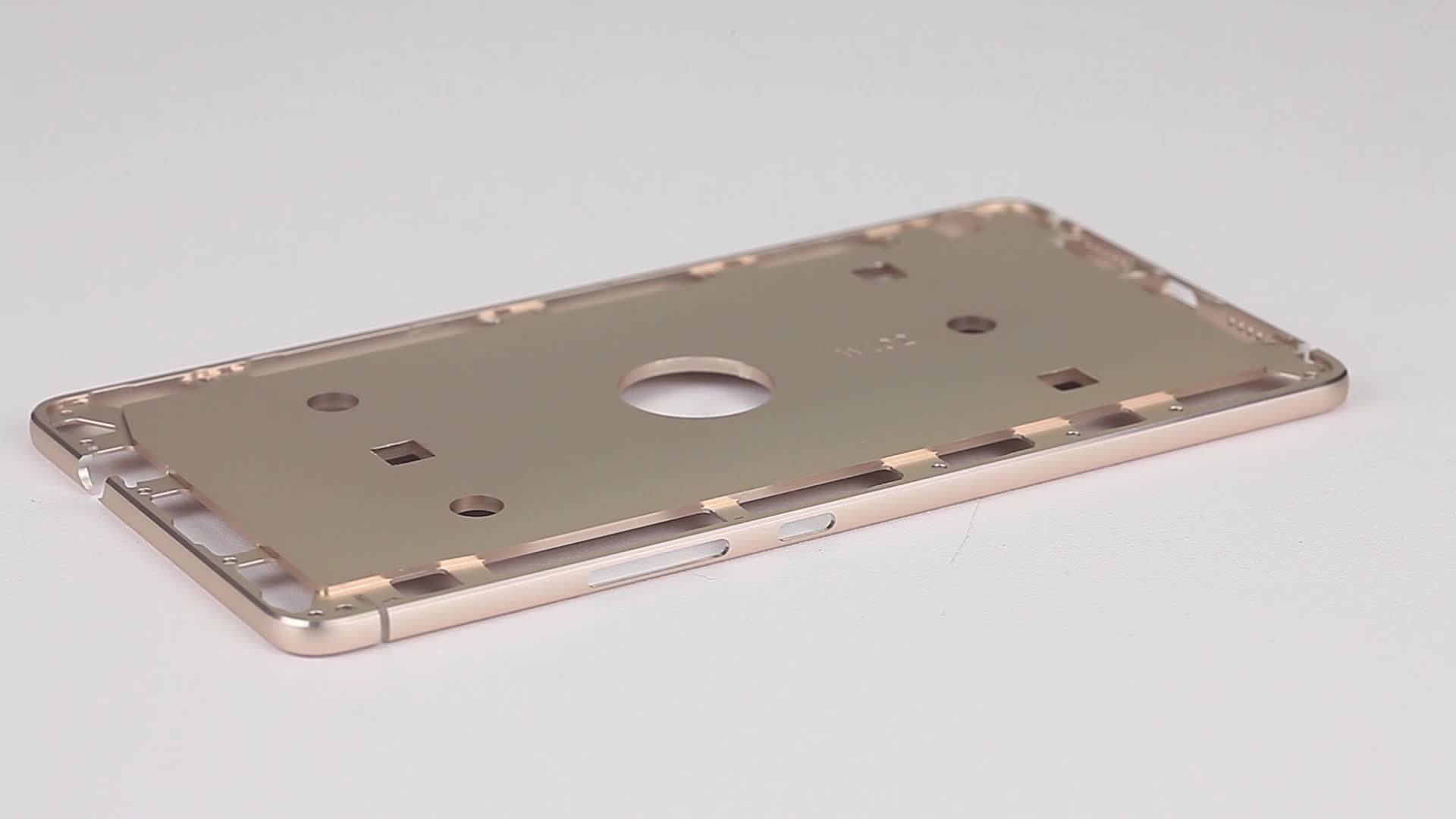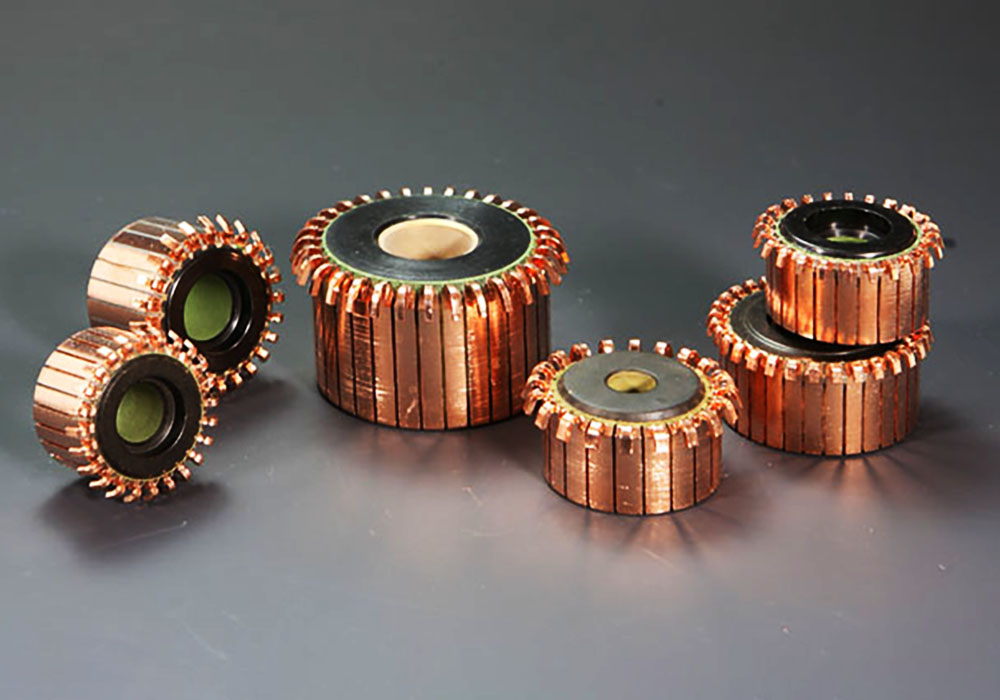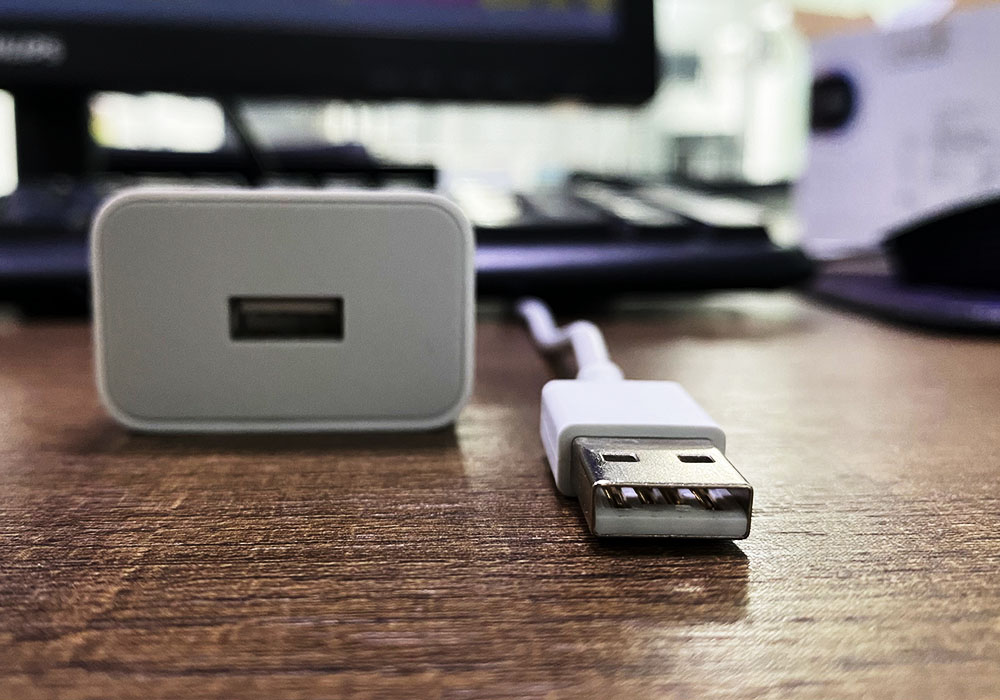The brake bracket is a critical component in an automobile’s braking system, playing a vital role in ensuring the safety and performance of the brakes. Key functions and use of brake brackets such as brake caliper mounting, load bearing, Alignment and Positioning, Corrosion and high temperature resistance.
Since this component is subject to great external damage, when assembling this accessory, make sure that it does not have cracks, defects, deformations, etc., to avoid malfunctions during vehicle operation and accidents.
We have customized the brake bracket machine vision inspection machine for the mining car manufacturing customer, using 4 industrial cameras to inspect the 4 sides of the brake bracket.
Note: Metal materials reflect light, so pay special attention when lighting.
Brake bracket inspection analystic image:
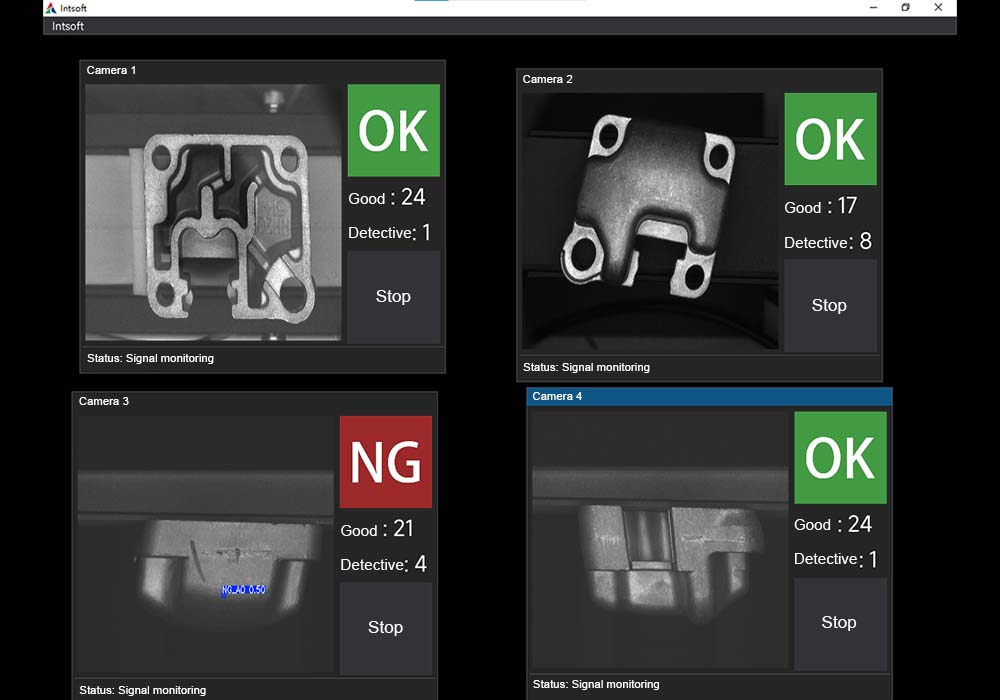
Inspection process:
The brake bracket passes through the conveyor belt, and from the beginning of the conveyor belt, the first camera position to the fourth camera position are lined up to capture the image.
Camera position 1: Capture the image at the bottom.
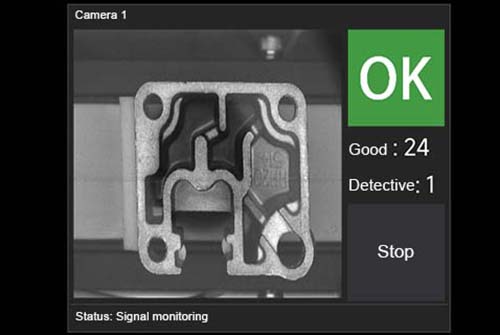
Because the bottom needs to be photographed, the support plate of the first camera position is transparent glass. When the brake bracket passes through the transparent glass, the camera shoots it from the bottom through the glass. After the shooting is completed, the rotating device on the top will push the brake bracket to the next position. At the same time, the image is judged by the computer system and the pre-trained AI model to determine if there is a defect at the bottom. If there is a defect, when the brake bracket passes through the rejection device between camera positions 1 and 2, the computer will feedback a rejection signal to the rejection device, and the rejection device will kick the defective brake racket into the bottom defect collection box. If no defects are detected, the brake bracket will flow to the next inspection station – Station 2
Camera position 2: Capture the top image

If there is a defect on the top, the inspection system will send a signal to kick the brake bracket flowing through station 2 into the top defect collection box.
Camera position 3: Capture the front image
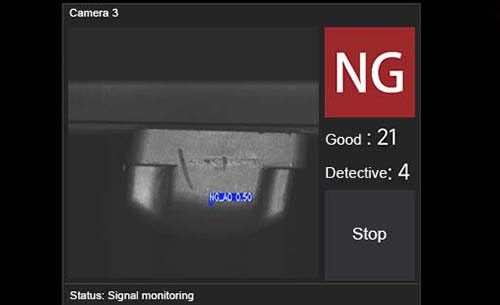
If there is a defect in the front, the inspection system will send a signal to kick the brake bracket flowing through station 3 into the front defect collection box.
Camera position 4: Capture the back image
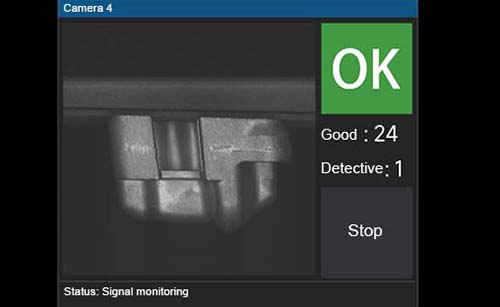
If there is a defect in the back, the inspection system will send a signal to kick the brake bracket flowing through station 4 into the back defect collection box.
Finally, the parts detected as good products flow into the good product collection box at the end.


